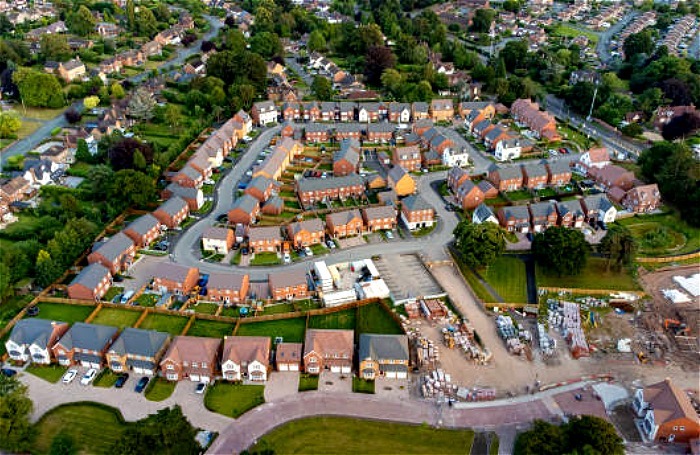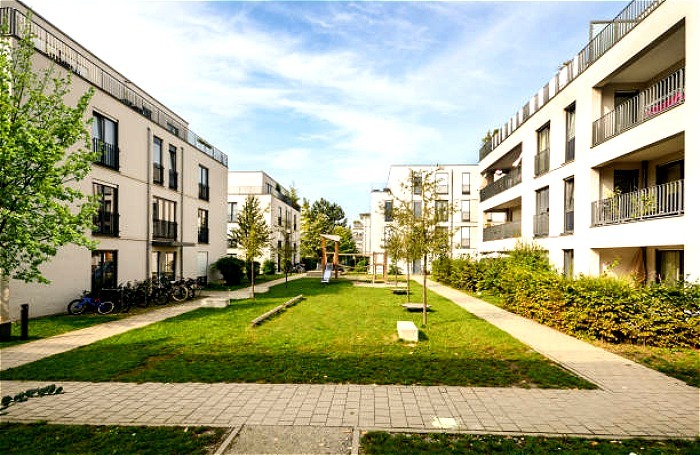As part of a programme of reforms to the planning system, in December 2022, the Department for Levelling Up, Housing and Communities announced a consultation on proposed updates to the National Planning Policy Framework (NPPF).
With the introduction of the Levelling Up and Regeneration Bill to Parliament in February 2022, the government pledged to create “a genuinely plan-led system with a stronger voice for communities,” through changes to national planning policy and guidance. This consultation is the first of many, with several others slated for release over the course of the year.
The consultation itself deals with several increasingly unavoidable political hot topics. How to increase the housing supply has long been the elephant in the room, with developers often going head-to-head with communities who feel unconsulted and unconsidered.
Environmental measures also get a slice of the action: with carbon measurement and nature-based solutions included in the text, we’re pleased that the government is seemingly making moves towards prioritising the climate emergency in the planning process.
This should include architect involvement in the design process, which will help to stem the tide of poor quality housing that can lead to developers butting heads with the communities they need to serve. And crucially, development must be sustainable – making the most of existing infrastructure and working towards net zero.
Our response to the consultation was informed by the insight and expertise of RIBA Members. In late January, members from across the country, including specialist RIBA Conservation Register members, took part in a series of roundtables covering issues addressed in the consultation.
Delivering the new homes we need
The thorny issue of housing supply runs through the entirety of the consultation. With tensions between communities and developers, the proposed measures aim to increase developer accountability. By suggestions of strengthening neighbourhood plans and increasing community provision, this carrot and stick approach seeks to support developers with clear design guidance, while strengthening sanctions against those who do not meet the needs of the community.
Whether or not the suggested changes will deliver an increased housing supply is another issue. The consultation recommends scrapping the requirement for local planning authorities to demonstrate a five year housing land supply (5YHLS), a measure which could have a knock-on impact in terms of forcing more reluctant authorities to bring forward land for development. Our response raises this concern, and we have recommended that the government maintains the requirement for the 5YHLS as it currently stands.

Affordable, high quality housing
While supply is one piece of the picture, RIBA has long been clear that this must be accompanied by affordability and crucially, quality. There are welcome measures proposed in the consultation to focus on affordability.
By making it easier for organisations that are not registered providers of social housing to develop new affordable homes, the revised NPPF may well create further avenues for such provisions to be developed. Alongside this, it’s welcome to see questions being asked on how to support organisations and communities to bring forward exception sites for affordable development.
Less has been said on ensuring that new housing meets high standards of quality. As such, we urge the government to actively promote the use of architects in the design of all buildings and equip planning departments with the resource to recruit and retain qualified designers.
Densification and placemaking
‘Gentle density’ is a concept that holds a lot of weight in the consultation. With ideas of character and beauty taking centre stage, the consultation indicates that while densification is necessary to meet housing needs, it must not take away from the existing vernacular of a particular area.
One method of supporting densification is via the ‘urban uplift,’ whereby an uplift of 35% of calculated local housing need is applied to the 20 largest cities and towns. The uplift aims to ‘make the most’ of brownfield land and existing infrastructure to sustainably densify existing urban areas and their peripheries.
While emphasis on densifying areas with existing infrastructure is welcome news, in line with what RIBA has been calling for, how exactly ‘gentle density’ is deployed is a much trickier question. Throughout the consultation, density is closely linked to specific conceptions of character and beauty – conceptions that are not currently defined anywhere in the document.
We have advised that the government looks to incorporate beauty and character into a broader definition - quality design. This is focused on securing positive outcomes for the people that will use and interact with places, and in turn, can only be achieved through the improvement of the wider planning and development process.

Levelling up
With levelling up across the country remaining a priority for this government, it was unsurprising for the phrase to be peppered through the text of the consultation. While murmurs around delivering on brownfield land and securing economic growth are included in the draft, the questions posed to respondents were much more open-ended. It begs the question: in what ways can the NPPF itself work towards securing meaningful levelling up?
For RIBA, it’s clear that within the confines of the NPPF itself, paving the way to improved access to green space and nature is a must. Alongside utilising small sites for green space in urban areas, we are clear that necessary upgrades to public transport infrastructure would allow more people access to expansive green space, thereby having a positive impact on wellbeing.
This sits alongside the need for walking and cycling infrastructure to be “levelled up” as an urgent priority. Making active transport more accessible has myriad positive implications for narrowing health inequalities and increasing quality of life.
National Development Management Policies (NDMPs)
While the in-depth consultation on NDMPs is expected to land on our desks later this year, this consultation allows for some debate on the principles and scope which are likely to underpin them. In the first instance, it is vital that the implementation of NDMPs does not hinder local planning authorities which are already undertaking best-practice. It is vital that the application of an NDMP would not force them to ‘lower the bar’ on exemplary work.
Environmental measures
It has never been more crucial to embed meaningful environmental protections into our planning system. The consultation’s acknowledgement of the importance of carbon measurement throughout the plan-making process and the focus on climate adaptation is welcome, and we are pleased to see that nature-based solutions (NbS) are touted as part of the way forward in terms of affordable, multi-purpose interventions.
With a number of consultations on aspects of the Levelling Up and Regeneration Bill yet to be released, it can feel hard to see how the proposed changes in the NPPF consultation will stack up next to wider elements of planning reform. We will continue to work alongside our members to provide expertise to the government as they undertake what is shaping up to be one of the most ambitious reforms to the planning system in recent years.
Read other RIBA responses to government consultations on housing and planning.









